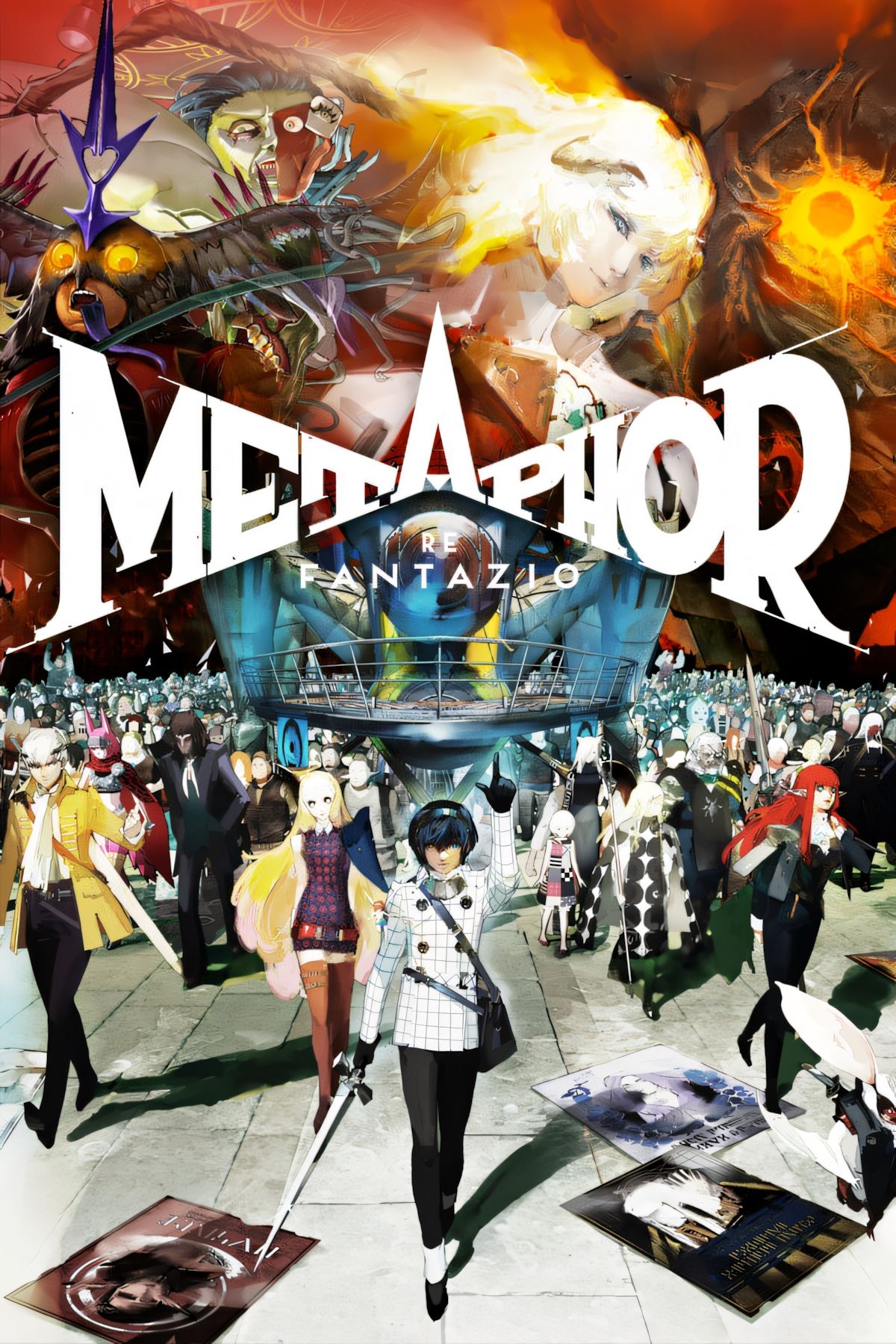Games
How Metaphor: ReFantazio Nails its Archetype Awakenings

This article contains spoilers for
Metaphor: ReFantazio
.
Metaphor: ReFantazio‘s party members are diverse, both in the tribes they hail from and their backstories. Despite this, they each have faced immeasurable hardship that ties into the harsh world of the United Kingdom of Euchronia, making it so that their decision to move forward is a byproduct of both the protagonist’s influence and their own will to fight for change. Channeling the iconic Persona awakenings from Atlus’ titular series, Metaphor emphasizes this resolve through stunningly realized transformations that allow its party members to wield the power of the Archetypes, making proper use of its themes of fear and insecurity in showing the strengths of its characters.
The awakening scenes of the modern Persona titles are no doubt visceral, though Metaphor: ReFantazio matches this intensity with its own Archetype awakenings, whose party commands their power by literally ripping their hearts out. The strength to “stand firm against fears” is the crux of Metaphor‘s awakenings and the channeling of the heroes of old, showing that each of its members has their own noble virtues that make them guiding stars for the king’s path to the throne. Through these awakenings, each ally has to reckon with what has caused them the most grief and fear in their lives, resolving to protect each other and the kingdom itself through newfound power and purpose.
Related
Metaphor ReFantazio: Best Hulkenberg Build
Table of Contents
The best build for Hulkenberg will focus on endurance as she’s a tank that will protect party members from damage in Metaphor ReFantazio.
“O Lodestar, O Thou Anguished Traveller…”
As magic, or “magla,” stems from the fears and anxieties of Metaphor‘s people, the ability to tackle this head-on and use it as strength, instead of running away, is the foundation for the game’s Archetype awakenings. These themes are especially poignant when considering the backstory of each of Metaphor‘s main characters, who, in some way or another, struggle with their purpose in the cruel world that is Euchronia. Metaphor combines its gorgeous art direction with some brilliant VA performances, like Stewart Clarke’s role as Strohl, to emphasize how the past has affected its characters while addressing their desire for change; fighting for a world of honor and protecting those who cannot fight for themselves shows that these awakenings are not in vain.
The Collective Efforts of Metaphor’s Tribes Working Together
Of course, these awakenings aren’t instant, and that’s part of what makes them so compelling. Characters like Heismay and Eupha need that push toward taking their lives back into their own hands, made more emotional through the protagonist and party’s efforts. From Heismay locking himself away to grieve his child to Eupha believing her only purpose in life is to be offered up as Virga Island’s priestess, they are able to come to the conclusion that a life of stagnancy or sacrifice won’t change anything because of the insight and help that they receive from the others. This collective teamwork and the ability to lean on others, despite tribal differences, is another underlying theme of Metaphor‘s story, emphasized through its bond system, Archetype synthesis skills, and the sheer strength of its diversity.
A Quieter Awakening
Often, first awakenings, at least in the Persona series, are triggered by the danger of battle. Metaphor mostly follows suit in this regard, though its final party member manages to put a compelling spin on the pattern. Basilio, who manages to circumvent a lot of the issues that can come with being added to the party later in the game, is first introduced alongside his brother Fidelio as a staunch Louis supporter and skeptic of the team. Metaphor‘s story takes care to integrate the two into Virga Island’s plot, making Fidelio’s eventual death by Metaphor‘s Louis hit harder. Though Basilio is at first understandably rageful, his awakening instead takes place during a quiet, reflective moment of grief, where a vision of Fidelio reminds him of his desire to protect the weak. It’s a great contrast considering Basilio’s Archetype is the Berserker, though it also reinforces this idea of moving forward despite the circumstances.
Metaphor‘s Archetypes themselves are a brilliant play on its medieval fantasy theme and its characters, with Eupha’s Summoner and Junah’s Masked Dancer being particularly apt for their backgrounds. The way that these Archetype awakenings tie into the plot, with the eventual reveal of the Prince’s Archetype, shows a careful consideration of their designs that makes the game’s awakening scenes all the more resonant. Though Metaphor‘s awakenings show clear inspiration from Persona‘s handling, they are able to stand on their own just as the rest of Metaphor‘s story and mechanical directions do, showing the title’s ability to iterate on what makes SMT and Persona so great while retaining its own sense of self.
-

 What To Watch4 weeks ago
What To Watch4 weeks agoVenom 3 Ending, Post Credits Scenes Explained: Who Is Knull?
-
!['Venom: The Last Dance' ending, explained: What happened to [redacted]? 79 hero image.fill .size 1200x675.v1729702186](https://www.themearound.com/wp-content/uploads/2024/10/hero-image.fill_.size_1200x675.v1729702186-400x240.jpg)
!['Venom: The Last Dance' ending, explained: What happened to [redacted]? 80 hero image.fill .size 1200x675.v1729702186](https://www.themearound.com/wp-content/uploads/2024/10/hero-image.fill_.size_1200x675.v1729702186-80x80.jpg) Entertainment4 weeks ago
Entertainment4 weeks ago‘Venom: The Last Dance’ ending, explained: What happened to [redacted]?
-

 What To Watch3 weeks ago
What To Watch3 weeks agoA Haunting Meta Doc About Ukraine’s Invasion
-

 Movies4 weeks ago
Movies4 weeks agoBilly Crystal Struggles to Clarify Apple TV+’s Haunting New Horror Series “Before” | TV/Streaming
-

 What To Watch3 weeks ago
What To Watch3 weeks agoNvidia Replaces Intel on Dow Jones Industrial Average
-

 Tech3 weeks ago
Tech3 weeks agoAutumn Internationals 2024 live stream: how to watch rugby union
-

 Entertainment4 weeks ago
Entertainment4 weeks agoM4 Mac mini vs. M2 Mac mini: What are the differences?
-

 What To Watch3 weeks ago
What To Watch3 weeks agoHow Lone Justice Came Together to Create First ‘New’ Album in 38 Years









